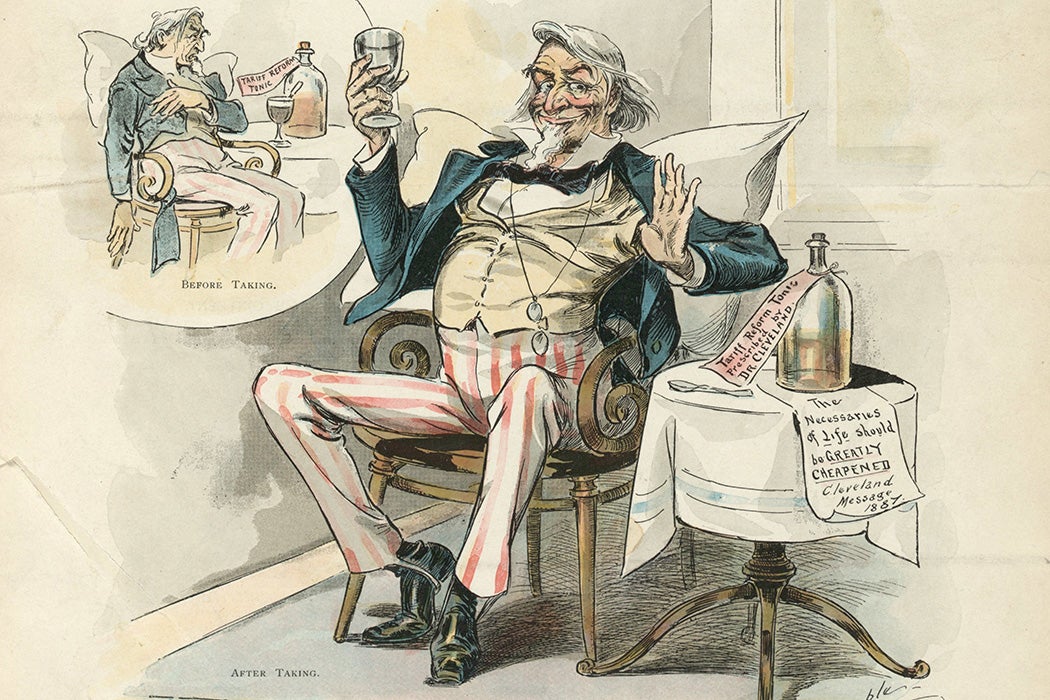What is American humor? Is there even such a thing, as opposed to, say, just humor in America, with all its varied voices? Because what, if anything, connects the eighteenth-century Connecticut Wits with the twenty-first-century Dave Chappelle, Poor Richard with Doonesbury, Mark Twain with Tina Fey, screwball comedies with Larry David?
There may not be a grand unified theory of humor in America, but scholar Judith Yaross Lee suggests that imperialism may be a good place to start. “Matters of empire,” she argues, are a key concept for the cultural analysis of American humor.
Lee identifies three distinct but intertwined strands of American humor in light of imperialism. As a British colony, the US-to-be experienced a “colonial continuity” of comic traditions. In other words, the inheritances of European models, especially British ones. The British empire’s influence remains profound: the “classic comedies of English theater” continue to “underlie American romantic, slapstick, and situation comedy on stage and screen,” Lee writes. Shakespeare, of course, has never stopped being mined: The Taming of the Shrew, for example, could become Kiss Me, Kate (musical, 1948; movie, 1953) as well as Ten Things I Hate About You (movie, 1999). American sitcoms Sanford and Son (1972–1977) The Office (2005–2013), and Veep (2012–2019), among many other television shows, were based on British precursors (Steptoe and Son, The Office, and The Thick of It, respectively).
“Anglophilia, paternalism, and nostalgia” for the British Empire were not erased by the American Revolution, notes Lee. But the revolution did introduce a new strand of American humor, which Lee calls “postcolonial discontinuity.” “Americanism”—a word coined in 1781 by a Scottish immigrant—was a break with the past, a break with tradition, a break with the British. It was first and foremost “anti-imperialist and anti-aristocratic,” a tradition still echoing, in one of Lee’s examples, in Tom Tomorrow’s 2017 This Modern World cartoon entitled “The Reign of Mad King Donald.”
A familiar component of this postcolonial strand is the American innocent abroad, triumphing over snobby, sinister, or savage foreigners. Yankee Doodle Dandy made fun of the Macaronis, The Interview (2014) mocked North Korea’s Big Boy Leader, causing that nation to label the film an act of war. The naïf abroad has even been sent back in time: A Connecticut Yankee in King Arthur’s Court (1889) wins the Middle Ages with Yankee gumption, while slackers pass their high school history class by kidnapping “So-crates” and other historical figures in Bill & Ted’s Excellent Adventure (1989).
At the same time new Americans were hooting down the pretensions of empire, they were forming their own. Lee reminds us that the Northwest Territory Ordinance of 1787, which “assert[ed] hegemony over land and people beyond the boundaries of the thirteen original states,” actually predates the Constitution by a couple of months. (This was, said the enslaver Thomas Jefferson, to be a “empire of liberty” instead of monarchy.)
“By imagining themselves as innocent victims of empire,” Lee writes, “they, conveniently enough, evaded responsibility for the American imperium that followed as the US grew westward by focusing attention eastward, across the Atlantic, instead.”
Once you’ve gained an empire—from sea-to-shining-sea, deep into Mexico, across the ocean to the Hawaiʻi, Guam, and the Philippines, around the Caribbean—what do you do with the damn thing? Lee’s third strand is “neocolonial hybridization,” a culturally hegemonic absorption and shaping of the “comic practices of conquered peoples, former slaves, and immigrants, yielding a huge array of minority ethnic and racial humors as a result of internal colonization both literal and metaphorical.”
Weekly Newsletter
Think Blazing Saddles (1974), which incorporates Jewish American humor amid a racial deconstruction of myths of the Old West, or Crazy Rich Asians (2018), a glitzy Hollywood rom-com notable for its non-traditional (non-white) cast.
Like the rest of American culture, American humor itself is globally influential: among other things, Lee notes that there are now multiple international variations of Mad magazine and The Daily Show. The latter’s genesis can be followed back through Saturday Night Live’s “Weekend Update” segments, beginning in 1975, which in turn followed the BBC’s That Was the Week That Was (1962–1963), a bit of Old Empire incorporated into the New.







